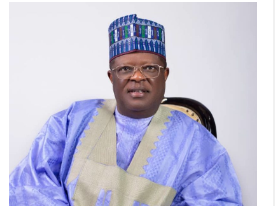THE GUARDIAN
Incumbents add N2.16tr to states’ legacy debts
· Debts balloon from N947.4b to N3.1 trillion in eight years
· Yearly IGRs about 20% of accumulated liabilities
· Incoming states’ state executives to service decade-old loans
· States burdened with unviable projects
· Akwa Ibom still servicing foreign facilities incurred during military era, at N22/$
From heaps of debts to tattered revenues, unsustainable wages to poorly-equipped civil servants and dead assets to loads of contingent liabilities, the 18 new chief executives of states who will be taking oaths of office on May 29 have their jobs clearly cut out for them.
But it may not be rosy reception for the majority of them as legacy fiscal burdens wait patiently for their resumption.
While some of them may be looking forward to making exceptional marks in the affairs of the states to stand a chance of re-election or scale up their credentials for higher offices, a myriad of decade-old challenges created by their predecessors are hard nuts they will have to crack.
Whereas debt is a major source of financing public expenditure, the outgoing governors are not leaving behind heaps of debts but also tattered revenues, which could potentially impede the debt sustainability risks of most of the sub-national units.
Some of the debts, according to financial statements reviewed by The Guardian, were incurred for failed projects pre-dated 1999 when the current democratic dispensation was birthed. But the incumbents have made the already-bad situation worse with ill-conceived debts, such as salary supports, whose tenors spread across over two decades.
Overall, the 18 governors that have completed their constitutionally-allowed two tenures plus Bello Matawalle of Zamfara, who could not secure re-election, will pass on a whopping over N3.2 trillion to the new state handlers.
The 18 states’ debt is about 42.3 per cent of the cumulative N7.34 trillion owed by the 36 states and Federal Capital Territory.
Overall, the affected 18 sub-national entities’ debts rose 232 per cent, from N947.4 billion outstanding as at December 2014 – a few months before the outgoing state chiefs took the reins. The amount owed to both local and foreign institutions and individuals has ballooned by N2.16 trillion to hit N3.1 trillion at the close of last year.
But with disclosure by the Debt Management Office (DMO) to the effect that some of the states’ records are not up-to-date in their filings, the actual debt stocks of the states might be higher than N3.2 trillion.
The debt office, in its recent report, listed Katsina, Taraba and Rivers as states whose debt submissions were last updated on either September 30, 2022, or September 30, 2021. The three states are changing political leadership in the next two months.
Year-on-year (Y/Y), the affected states have increased their indebtedness (albeit those documented) by approximately 15 per cent. As at December 31, 2021, their combined exposure was N2.7 trillion. But last year, a period they were expected to switch to an aggressive fiscal consolidation ahead of transition, the majority of them incurred fresh debts, increasing the burden of their successor by an additional N407.6 billion in 12 months…



